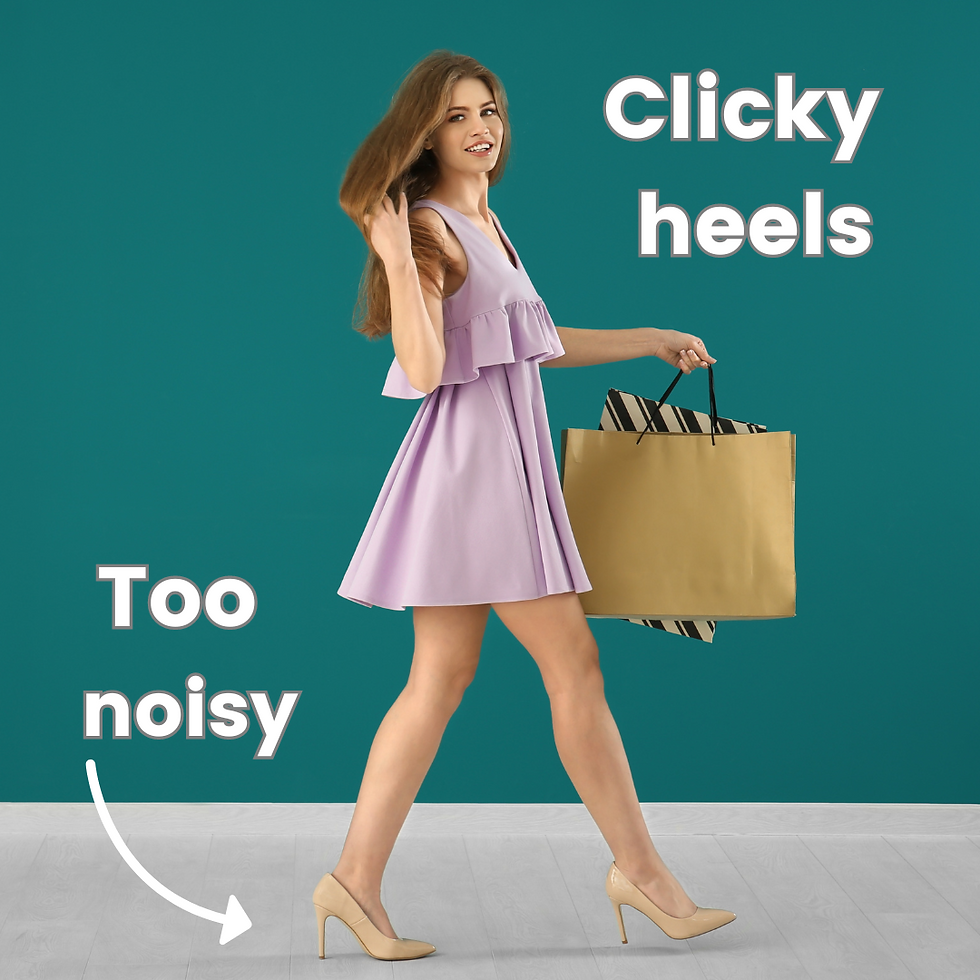What Should I Wear On Camera
- Laura Doman

- Aug 24
- 4 min read
Wardrobe Tips to Help You Look Confident, Credible, and Camera-Ready
Ever catch someone on a Zoom call who looks like a floating head? Spooky around Halloween … less so in a business meeting. That’s usually what happens when someone doesn’t consider their clothing against a green screen (or any background, really).
The truth is: what you wear on camera matters. Your wardrobe choices affect how your audience perceives you, your credibility, and even how well they stay focused on your message. Done right, your look complements your delivery. Done wrong, it can distract, confuse, or even cause you to disappear into the background.
Let’s break down the basics of dressing for video so you make a sharp, lasting impression every time you step in front of the lens.
Your on-camera wardrobe is about framing your credibility and supporting your message. It's NOT about fashion for fashion's sake!
Think of your clothes as the silent partner to your performance: they frame you, support your message, and signal credibility — without stealing the spotlight.
Why Your On-Camera Look Counts
When we meet someone in person, clothing plays a big role in how we size them up. The same goes for video. Viewers are making lightning-fast judgments the second you appear on screen:
Does this person look competent and prepared?
Do they seem trustworthy and authentic?
Does their appearance match the message they’re delivering?
If the answers don’t line up, your audience tunes out—fast. That’s why a polished, intentional wardrobe is part of your on-camera presence strategy.
What you wear on camera needs to reflect your company, product, and target audience. Leave any shock value for the advertisers to test and market.
Dressing With Purpose
You don’t need to default to a suit and tie or a stiff, “corporate” look. Instead, your outfit should:
Reflect the purpose of the video (business pitch, casual vlog, professional training, etc.).
Match the brand values of your company or project.
Help you feel comfortable and confident so your delivery shines.
Think of your clothes as the silent partner to your performance: they frame you, support your message, and signal credibility—without stealing the spotlight.

The Do’s and Don’ts of On-Camera Colors
Color is one of the biggest culprits when it comes to wardrobe mishaps. Here’s how to choose wisely:
Do’s
✅ Stick to solid colors or simple color blocks. They keep the focus on you instead of your shirt pattern.
✅ Choose muted tones or pastels for a softer, more flattering look.
✅ Wear shades that complement your skin tone or match your brand palette.
✅ Keep your background in mind—contrast helps you pop on screen.
Don’ts
❌ Avoid black against a dark backdrop—you’ll disappear.
❌ Skip white under bright lights unless you’re outdoors; it often washes you out.
❌ Never wear green in front of a green screen (unless you like that floating-head effect).
❌ Leave neon, sparkles, and rhinestones in the closet—they wreak havoc on cameras and lights.
❌ Stay away from wild, busy patterns. They distract and look unprofessional.

Styles That Work (and Don’t)
Your clothing style should support your role in the video, whether you’re a keynote speaker, a product demonstrator, or a company spokesperson.
Do’s
Keep it simple. Clean lines and uncluttered necklines photograph best.
Go classic. Open-collared shirts, polos, and tailored jackets work well across most settings.
Frame your face. A jacket or blazer over a solid top pulls focus upward.
Don’ts
Don’t wear anything too trendy—it’ll date your video quickly.
Skip outfits that scream “look at me” instead of “listen to me.”
Avoid logos that aren’t your own brand—they confuse your message.
Stay away from one-shouldered or off-the-shoulder tops if you want to project credibility.

The Footwear Factor
Even if the camera won’t catch your shoes, they matter more than you think. Standing for long shoots requires comfort and stability, and certain shoes can actually interfere with production.
Do’s
Wear closed shoes for full-body shots (unless sandals are part of your brand).
Choose footwear that lets you stand steady and relaxed.
Don’ts
Skip heels or shoes that click loudly on hard floors—they’ll mess up your audio.
Don’t go barefoot on set. It’s risky, unprofessional, and uncomfortable.
Final Thoughts on What to Wear on Camera
You don’t have to be a fashion stylist to look great on camera. All it takes is awareness, a few smart choices, and an outfit that helps you feel confident in your delivery.
Remember: your appearance is your audience’s first impression. And in the fast-paced, scroll-happy world of video, that impression often decides whether people keep watching—or move on to someone else.
So next time you’re preparing to film, take one last look in the mirror and ask: “Does this outfit support my message?” If the answer is yes, you’re camera-ready.
Want more tips? Stay tuned for next month's newsletter on how jewelry, hair, and makeup affect your on-camera presence.
Upcoming Events

Welcome to Read My Lips: Cool Conversations with Creatives with akaRadioRed
LIVE-STREAMING – Monday, August 25, 2025
2 PM Pacific / 5 PM Eastern
Live-streaming + On-demand Video
Want to learn more? Let's talk!
I'm Laura Doman, a voice & TV/film actor and video communications coach. As an actor, I create memorable characters that tell my client's stories well, from the friendly CEO to your sassy best gal pal dispensing real-world advice. As a coach, I help you become more comfortable and charismatic on camera in videos, presentations, and online appearances.



















